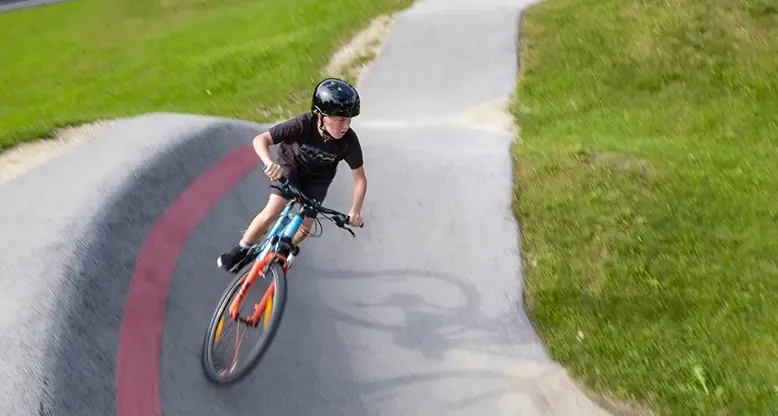Pumptracks: local authorities on the way to a voluntary standard

Standardization work has begun to support the development of pumptrack, a fast-growing urban activity. Manufacturers, end-users and local authorities are expected to come together to define best design practices for these routes, which are becoming increasingly popular throughout France.
Hollows and bumps, to the delight of mountain bikes, BMXs, skateboards and other scooters. That’s what’s so special about pumptracks, city trails designed to appeal to a wide range of wheeled and rolling users! Communes are not mistaken. More and more local authorities are investing in these looping courses, which delight their (young) constituents. Did you even know the etymology of the word “pumptrack”? Listen to the video explanations!
We’re talking about innovative equipment that didn’t exist just a few years ago,” says Grégory Berthou, in charge of the sports and leisure sector at AFNOR Normalisation. Today, an estimated forty courses have been built in France, with new inaugurations every month. Our role is to help those involved in this sport to write down best practices for design, use and maintenance. ” The result will be a voluntary standard that reflects a consensus and, above all, the general interest.
Pumptracks standard: the safety issue
Skateparks, for example, already have a voluntary standard, NF EN 14974, released in a revised version in May 2019, which lists safety requirements and test methods. For the time being, however, there’s nothing on the pumptrack front. Mayors are reluctant to take the pl unge,” notes William Gleizal, Development Manager at Hurricane, one of the French manufacturers who took the issue to AFNOR to initiate the standards work. The question they always ask is: is there a standard on the subject? Without a reference framework to guide their specifications, many of them deplore the lack of a benchmark to guide them.
Because this equipment is not without risks. Bumps too close together, corners too tight, poorly separated tracks – it’s a crash or a collision! For all players, safety remains the top priority. Unscrupulous companies improvise themselves as pumptracks manufacturers,” says Vincent Chrzanowski, for manufacturer Hurricane. It’s not enough to lay a layer of asphalt on uneven ground to create a runway! This approach calls for rigorous design, managed by specialists and backed up by a reference document that guarantees the safety of the installation. ” Rapidly issuing rules of good conduct will protect users and customers alike, and help manufacturers who apply them to secure their markets in the future. And that’s AFNOR’s mission, with the help of all stakeholders!
Pumptracks standard: a world first
An initial session to present the normative work has already taken place in Paris in mid-September 2019. Representatives from the French Ministry of Sports, cycling, touring and rollerblading federations, local authority sports departments, user associations and course designers were all present. The goal is to go fast! At an average of one meeting every six weeks, the stakeholders hope to publish a reference text within twelve to eighteen months. ” This would be a world first on the subject,” points out Grégory Berthou.
Moreover, the latter points to France’s capacity for innovation on these issues in the run-up to the 2024 Olympic Games, with its desire to promote sport for all. And to establish an effective, representative standard, all the players involved are invited to participate. As far as builders are concerned, we don’t have the same constraints as a municipality,” explains William Gleizal. We’ll be looking very closely at issues such as safety and glide quality. But we don’t master all the needs of a town hall, on maintenance issues for example. The more representative the commission, the more relevant the standard will be, and the more it will help develop this increasingly popular activity. ” Tomorrow’s standards are being prepared today. And certainly not without you!
Contact AFNOR to join the standardization committee